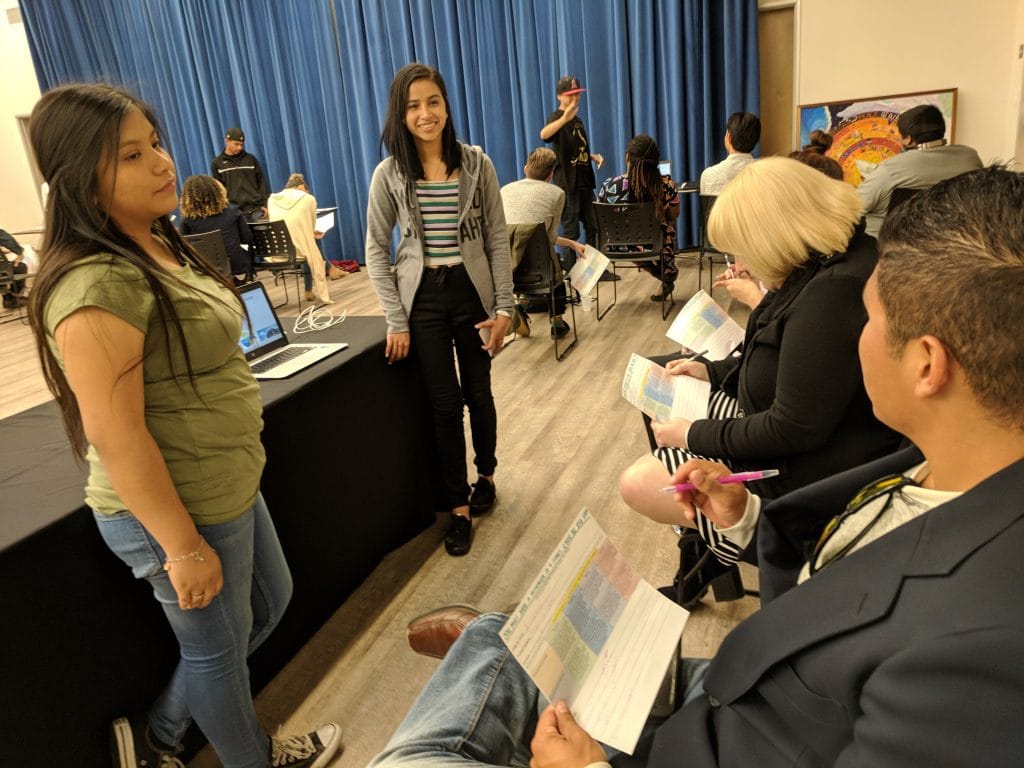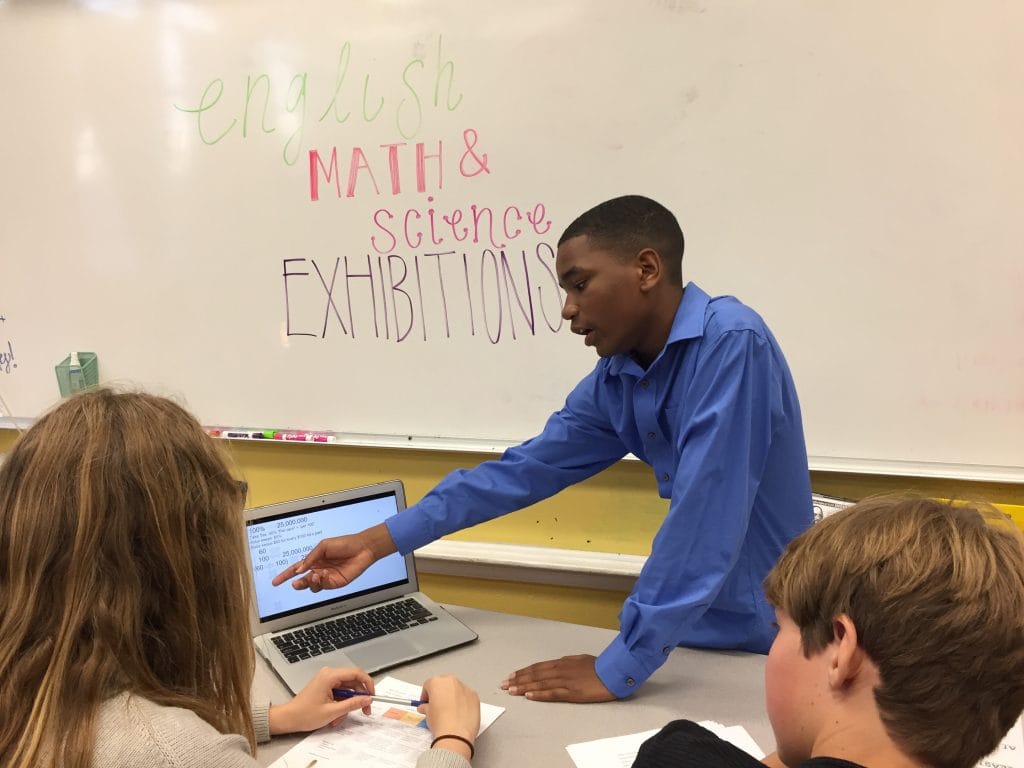“Super school” targets at-risk students for real-world success
March 30, 2018 |
March 30, 2018 |

RISE students presenting (in both Spanish and English) their interdisciplinary course final to an audience of teachers, community members, peers and organizational partners. The students designed community centers based on needs identified using quantitative and qualitative data on South Central, Los Angeles. Photo courtesy of RISE High.
What’s fueling the student experience at one of the country’s aptly named “super schools”? In part, blended learning is helping to unlock a wholly new approach to high school.
At Da Vinci RISE High School, a new charter school headquartered in Hawthorne, California (and a 2016 XQ: The Super School Project grant recipient), the student experience marks a 180 from traditional schooling. RISE High students—many of whom come to the school experiencing housing instability, are in the foster care system, are severely credit-deficient, or have previously been homeschooled—need the right combination of an alternative, flexible learning environment and strong relationships to thrive as young adults. And that combination defines RISE High’s blended model.
“RISE High is designed to meet our students where they are, and the blended program provides our students with flexibility to learn at their own pace, time and place of choice,” said Erin Whalen, the founding assistant principal.
Inside the model
RISE High students’ learning experience is centered on an Enriched Virtual model in which students attend in-person classes two to three days per week based on a personalized learning schedule, which a student establishes based on her transcript and in partnership with her teachers, advisor and guardians.
The remainder of learning occurs online via a peer-driven learning platform called Dream See Do. RISE High teachers develop their own curriculum and house it on the platform, which doubles as a learning management system. But the real key to this platform is that it creates an active, online learning community—all student work is submitted there for feedback and discussion from both teachers and peers. Students can track their progress in one place.
“Our biggest challenge was to create an authentic blended-learning experience with real human interaction,” Whalen said. With Dream See Do, even when working online remotely, students are engaged in social learning, whether it be via messaging, video, or audio. Because all content is teacher-curated, the student is consistently learning from her own teacher, bolstering that relationship—in a way that wouldn’t be possible if RISE High were to use an external online curriculum provider, Whalen believes.
“That’s my main piece of advice for other schools: teacher-curated curriculum is so powerful for building relationships,” said Whalen. “It’s hard for students to learn from someone, or something, you don’t know or trust.”
You might be thinking, how do teachers have time for it all? At RISE High, the schedule accommodates this instructional design. Every Monday from 9am to 12pm is dedicated time for teacher planning and professional development. No classes are scheduled before 12pm. And the fact that all curriculum and student-created content is organized on one site means that teachers can spend less time organizing. They then have the option to use precious time outside of class to prepare thoughtfully differentiated lessons.

A RISE student using mathematics and social studies to analyze and compare the careers of three basketball players to answer the question, “What makes a legacy?”. Photo courtesy of RISE High.
Making the most of face-to-face time
Nevertheless, even within this modified schedule, teachers aim to maximize in-person time with students. All classes are small-group and highly differentiated. The majority of class time is spent offline, engaging in interactive activities like socratic seminars, designed to help students build their interpersonal communication and social-emotional skills. In addition, students meet weekly in small advisory communities to reflect on their social-emotional and academic strengths, weaknesses, and progress; to work through challenging occurrences in their lives; and to build positive relationships at school.
The campus is open all day to students who need or want a place to work online or to ask questions. Both RISE’s Hawthorne and South Central L.A. campuses have “homework arenas” where students can hang out, study, and seek support from teachers as needed. Eventually, Whalen and his team’s dream is to have satellite campuses all around the greater L.A. area to help best serve students wherever they may be (and they’re making it happen with mobile learning centers in partnership with School on Wheels).
Optimizing for at-risk learners
RISE embraces teaching and learning practices still largely on the frontier, such as weekly real-world learning opportunities, a core of project-based learning, and the integration of mental health supports. The Enriched Virtual model helps make these critical supports possible by taking standard instruction online, opening up valuable in-person time for nontraditional learning opportunities. RISE High is one example that blended learning, especially when designed to solve for an important challenge to student learning, can be a powerful instructional lever to set up at-risk students for success.
Are there at-risk students in your school district who could benefit from a more flexible, personalized learning program? Take a look at other schools and districts in the BLU Directory who are using the Enriched Virtual model to provide an alternative learning option for students.
Leave a Reply